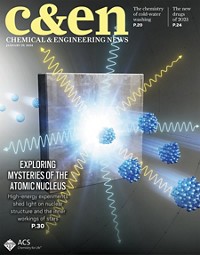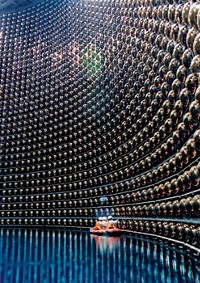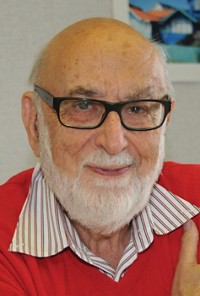Advertisement
Grab your lab coat. Let's get started
Welcome!
Welcome!
Create an account below to get 6 C&EN articles per month, receive newsletters and more - all free.
It seems this is your first time logging in online. Please enter the following information to continue.
As an ACS member you automatically get access to this site. All we need is few more details to create your reading experience.
Not you? Sign in with a different account.
Not you? Sign in with a different account.
ERROR 1
ERROR 1
ERROR 2
ERROR 2
ERROR 2
ERROR 2
ERROR 2
Password and Confirm password must match.
If you have an ACS member number, please enter it here so we can link this account to your membership. (optional)
ERROR 2
ACS values your privacy. By submitting your information, you are gaining access to C&EN and subscribing to our weekly newsletter. We use the information you provide to make your reading experience better, and we will never sell your data to third party members.
Physical Chemistry
A Dark Matter For Chemists
Powerful new evidence for existence of dark matter in the cosmos prompts speculation about its 'chemical' properties
by Ivan Amato
October 30, 2006
| A version of this story appeared in
Volume 84, Issue 44

Dark matter. I've always loved the sinister, edgy sound of the phrase. Even better is the implausibility of the whole idea. If dark matter is real, then the universe is rife with a kind of invisible, untouchable stuff that collectively packs several times more mass than the normal matter enshrined in the periodic table. I have long considered dark matter with the same kind of willing suspension of disbelief that makes theatric productions and novels so enjoyable. But now, with the dramatic news about dark matter that made headlines this summer, dark matter may be jumping to the nonfiction side of the fence. And sitting where I do, on the staff of this magazine, this development suddenly made me wonder what dark matter—if it really is real—might mean for the chemically inclined among us.
First, a little background. Decades ago, astrophysicists and cosmologists came up with the idea that a huge amount of invisible and never directly observed mass exists in the universe. The idea was triggered by the fact that the sum of all the normal mass in stars and galaxies is too small to account for things such as the shape and distribution of galaxies. Without the extra gravitational mass from dark matter, stars and galaxies wouldn't even be able to hold together, dark matter theorists say.
In a press conference at National Aeronautics & Space Administration headquarters in August, researchers with access to the orbiting Chandra X-ray Observatory and other deep-space observatories announced that they finally had discovered a more direct sort of evidence for the existence of dark matter. Previously, the case for dark matter's existence had been made in the form of inferential and negative argumentation. "If there were no dark matter, you couldn't explain this or that massive cosmological structure that is before our telescope-widened eyes," was the typical format. The new, somewhat more direct, evidence comes from observations of the collision of a pair of oppositely moving galaxies some 4 billion light-years away. Press materials describe it as "the most energetic event known in the universe since the Big Bang."
By looking at the gravitational effects of starlight coming our way through the region of the gargantuan collision and mapping out where the normal, luminous mass in the collision was, the researchers found that most of the mass was concentrated right where the normal and visible mass was not. The 10 million-mph collision, the scientists reasoned, slowed down only the normal matter. The dark matter of each galaxy zoomed forward unscathed.
This result isn't quite like having some dark matter in hand to tweak, prod, and measure. But it has made the reality of dark matter, which theorists expect would be embodied as some kind of particle, a better bet than ever.
Lawrence Berkeley National Laboratory physicist Michael Levi, whose interests reside in the universe's dark sides, was willing to talk to me about the "oh, wow" implications of dark-matter particles. "They may be right here, and we don't know it," he said. "They may be doing stuff, and we don't know what it is," he continued. "Oh, wow," I thought. Researchers might even be able to make some dark-matter particles in the next generation of high-energy-particle accelerators such as the soon-to-be-completed Large Hadron Collider in Geneva or the proposed International Linear Collider, Levi suggested. Theoretical candidates include supersymmetry particles with masses comparable with those of atoms between, say, boron and ruthenium, on the periodic table.
These tidbits made the dark folds of my gray matter light up with questions. Might these dark-matter particles have some chemistry-like qualities? Dark matter doesn't interact with normal atoms, but might there be wholly different rules of material engagement that operate in this parallel world of dark matter? Might there be dark-matter molecules? Dark-matter polymers? What about a periodic table of dark-matter particles whose members have always been mixing and matching, invisibly, into forms that future generations of dark-matter chemists might begin to unveil?
Levi put the brakes on my runaway train of wondering by pointing out, quite kindly, that talk of dark-matter chemistry is a wee bit premature. "Nobody knows yet what dark matter is," he reminded me. Craving at least one second opinion, I checked in with California Institute of Technology cosmologist Sean Carroll. I ran by him the same set of questions about the possibilities for dark-matter chemistry to become a growth industry.
"Sadly," he said, wasting no time in bursting my bubble, "it is pretty implausible." He ticked off some reasons. Dark-matter particles never interact with ordinary matter. They don't interact with each other. They have nothing to do with light. "There is no electricity in this dark world," he added, letting me connect the dots to the central role of electrons in chemistry. Then, just as I was getting ready to give up hope on the possibility that this universe might host some vast, yet-to-be-uncovered world of dark-matter chemistry, Carroll said one more thing that I took as a tiny peg for hanging a thread of hope: "The universe is preposterous."
Views expressed on this page are those of the author and not necessarily those of ACS.





Join the conversation
Contact the reporter
Submit a Letter to the Editor for publication
Engage with us on Twitter